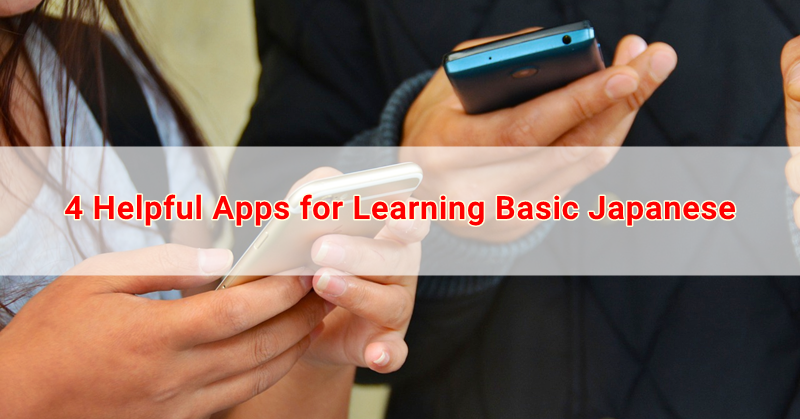If you’re planning on learning Japanese for the first time or are looking for some supplementary resources to polish up your Japanese grammar and vocabulary skills (from probably way back), you can always turn to your smart phone to get everything you need right at a simple tap of a finger.
But learning something new, let alone a complete language including all its rules, dynamics, and usages, can be quite overwhelming especially when you don’t know where to start. Good thing technology nowadays makes our daily activities including our study routines very much in-sync with our lifestyle and learning options through the use of smartphone apps and other resources such as e-books, audiobooks, and video tutorials online. In this post, we have gathered some of the most useful Japanese language learning apps that every learner, beginner or otherwise, can use to learn during their free time or while on the go:
4 Apps for Supplemental Basic Japanese Learning
1. DuoLingo
Even if you don’t have any working knowledge on Hiragana or Katakana, you can jump right in and start your Japanese language lessons with DuoLingo. As each lesson is categorized in fun and interesting topics from family, food, to Japanese subculture, you can just jump right into each lesson and learn new and relevant words each time. If you’re learning Japanese for certain reasons, like, maybe going to the Tokyo 2020 Olympics, there’s even a category to help you study for that. Every time you complete category, a power bar appears underneath it. When you check back into the app, you’ll notice that the bar starts to go down (hinting the need for a review of the lesson to ensure retention).
Apart from building your vocabulary, DuoLingo focuses on sentence structure and construction. Every time you take a review, the app quizzes you in a variety of ways. At some point, you’ll find yourself being challenged to translate English sentences into Japanese, or picking up English terms and expressions from a word bank to construct Japanese sentences. The app is available for free on both Android and Apple stores. There’s even a DuoLingo community of like-minded users you can chat with online to get some tips and exchange ideas for extra motivation.
2. iKnow
As there are many approaches to learning, iKnow brings all of these components organically in every lesson. Expect to be presented with audio, text, and images all at the ssame time as you study eah lesson. Even if you want to get down right from the very beginning (with hiragana and katakana characters), iKnow lets you take up a course to cover all the basics through 10 progressive parts until you get to the core lesson series.
What’s interesting about this app too is that the length of each lesson is fully customizable, and if a certain series isn’t challenging enough, you have the option to skip around certain lessons to match your preferred lesson level. And just like in school, iKnow organizes your data and scores, giving you access to several metrics that show your learning pace, preferred study pattern/schedule, and overall progress. Also, it has a variety of calendar and scheduling features available in a Japanese language application. The app is free to download for both Android and iPhone users; however, there is a separate monthly service fee of JPY 1,480, or JPY 9,360 per year.
3. Human Japanese
Despite having debuted earlier than most Japanese language apps on this list, Human Japanese stands its own ground because of its comprehensive and functionality just like that of an interactive textbook turned into an app. Lessons are divided into chapters, filled with images, audio, and quizzes at the end. There are even cultural notes added to the features of the app, which is patterned after most Japanese textbooks adopted in mobile form.
Even if you are already past the beginner level, there is an intermediate version of the app that is just as comprehensive and interactive available on mobile for you. With your background on kana (hiragana and katakana) from the first application, kanji is then introduced in the second application. As kanji can be a little trickier to learn, the chapters are all accompanied with furigana (kana over- or beside kanji for pronunciation). If you would like to take the comprehensive, textbook-style approach to your learning, then this is the app for you. The Human Language is a paid app which comes at a price of JPY 1,200 (iPhone) and JPY 1,160 (Android).
4. StickyStudy
If you’re all about getting the right mix of your lesson material for our study experience, then there is one app that can do that just for you. The StickyStudy app takes pride in such customization features which include tap settings for viewing notes such as furigana, its actual meaning/usage(s) accompanied with an animated stroke order, sample sentences, as well as a list of other similar kanjis for reference.
Aside from the app’s exceptional quizzing styles, StickyStudy also lets you configure your lesson according to the purpose of your study. For example, if you’re preparing for the JPLT, you can prepare for the exam by studying the kanji and vocabulary according to the level you will take. Additionally, you can check out other categories such as joyo (regular usage) kanji, hiragana, katakana, or even try out the same level of teaching by which Japanese children learn their language at school. All these app features are only available to iOS phones for a price of JPY 1,200.
Do you have other app suggestions that should be included in the list? Please let us know through the comments section below.
